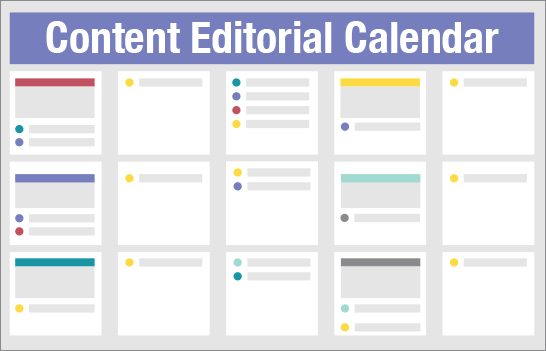Why You Need a Content Editorial Calendar
As we discussed in the Furia Rubel December 2017 blog Law Firm Content Marketing: Creating Trust & Awareness, a content marketing strategy is imperative for reaching new clients and building trust and awareness for your attorneys and practice areas. Once law firms determine if content is valuable, relevant, timely and consistent, it is time to share. With so many blogs, videos, media mentions, press releases, articles, infographics and social media posts, legal marketers can find themselves overwhelmed with keeping track of what has published and what should go next. An editorial calendar is a critical tool for organizing all of that content.
Along with giving a central place to keep track of content, here are some editorial calendar benefits:
- Eliminate last-minute scramble. There’s nothing worse than realizing content is due at the eleventh hour. Mapping out due dates helps a firm plan ahead.
- Give writers time to plan what they are going to write. Planning also allows time for the author to jot down ideas, revise and rewrite if necessary to create a substantial piece.
- Brainstorming future topics is easier when all past subjects are in one place. Seeing past posts eliminates too many recurring topics and keeps content fresh.
- A well-managed editorial calendar focuses attention outside of just short-term campaigns and helps to obtain a long-term marketing strategy. It is important to step back from publicizing one event or ad and analyze the entire year’s strategy from a macro level that the editorial calendar allows.
- Keeps blogs and social media posts from falling off the radar and pushed to the back-burner with other business task duties. We all know revenue-based endeavors and day-to-day tasks usually take precedence in our hectic work schedules. Putting due dates on an editorial calendar can move content creation to the forefront and make it a priority.
- Promotes frequent content posting. Simply posting content is not enough. Firms need to post consistently to keep an online presence.
- Establishes who is assigned and when, so there is no confusion. Designating who is responsible for what and when, spreads out authoring responsibilities among the firm and provides clear allocation of tasks.
- Provides a place where all team members can collaborate on the content strategy. Giving members access to one central location provides a convenient method for all to engage in joint marketing efforts.
- Planning helps tie in marketing tactics with business strategy. A speaking engagement that should be blogged, an award coming up that a voting eAlert might be appropriate for… these business engagements can be charted into the marketing plans.
Depending on how extensive your content marketing plan is, your calendar can be simple, or if you post more frequently it can be more comprehensive. The key in tracking elements is to provide a visual map of your firm’s marketing strategy. According to Adweek, “from content strategy to content development, all the way through to content amplification, the most important thing you can do is create a process within your organization to help you maintain that healthy ratio of quality and quantity.” The editorial calendar is the tool to streamline that process.
Essential elements to include in an editorial calendar are:
- Content: This can run the gamut from written form to visual. Examples are blogs, long-form content, case studies, white papers, articles, press releases, infographics, videos, podcasts, audio posts, social media posts and ebooks.
- Creator: This can include writers, designers, outside agencies or freelancers.
- Dates: Keeping a timetable of upcoming post dates can ensure frequency of posting
- Distribution Channel: Logging where content posts will help to keep you organized when using multiple platforms and assists the creator in tailoring the post to a specific medium. For instance, a Facebook post will be much shorter than an article in a publication. Examples of distribution channels are email, website, publications, or social media.
Other elements that can be included in a more extensive editorial calendar are meta data tags, editor, proofreader, status, draft due date, artwork title, and a link to the published item once complete. The editorial calendar can become a production tool, tracking every aspect of workflow. A good idea is to keep a space to jot down future topics and ideas worth writing about. These ideas can then be sorted out and assigned as necessary.
Whether your firm chooses to utilize a marketing service such as CoSchedule or spreadsheet, an editorial content calendar is a key tool for your firm’s content marketing strategy.


